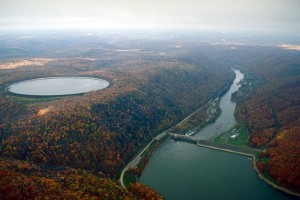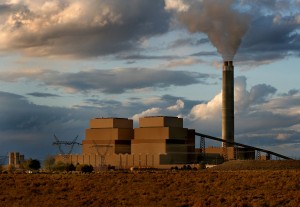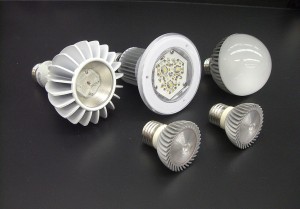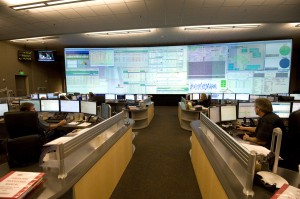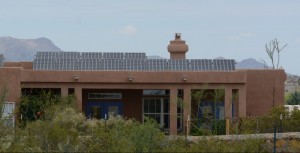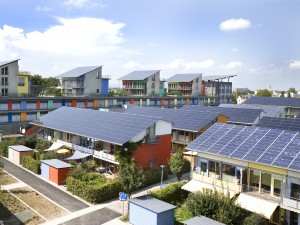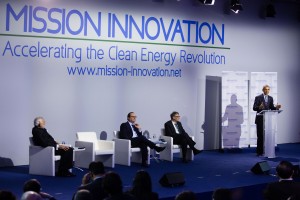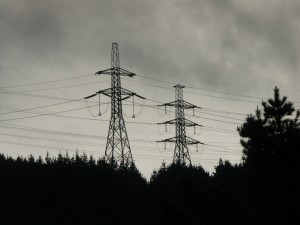587 item(s) were returned.
President
Clean Energy Development, LLC
Pumped storage hydro (PSH) has provided the U.S. with greater capacity for energy storage and grid reliability since the 1920s, although not to its full potential. The capabilities of PSH could be realized as a result of freshly passed energy legislation in the Senate. If S.2012 is signed into law, it would direct the Federal Energy Regulatory Commission to “identify and determine the market, procurement, and cost recovery mechanisms that would encourage development of PSH; and properly compensate those assets for the full range of services provided to the power grid.” The Department of Energy (DOE) agrees, and recently recognized… [more]
View InsightAs a party to the Paris Climate Agreement, the United States affirmed its continued commitment to significantly reducing carbon emissions by 2025. According to the Department of Energy and the International Energy Agency, achieving large CO2 reductions will require an “all of the above approach” with new and innovative energy technologies, such as carbon capture playing a primary role in any successful CO2 mitigation strategy. Carbon capture and sequestration (CCS) have been receiving bipartisan support from a number of policymakers. In February Representative Mike Conaway (R-TX 11th Dist.) introduced a bill, which would expand and create a permanent tax credit… [more]
View InsightPresident
The Stella Group, LTD
Over 20 states are reviewing their net-metering rules for solar energy and at least 10 are conducting value of distributed generation studies. But is this just delaying the inevitable — that states must embrace policies that promote energy conservation technologies rather than sustain their traditional grids? And are solar energy systems the only culprit? In fact, energy conservation technologies have already significantly impacted baseload demand patterns. According to the Department of Energy (DOE), light-emitting diode (LED) installations increased in all applications between 2012 and 2014, more than quadrupling to 215 million units overall. Energy Star notes “In 2014…American families and… [more]
View InsightCofounder
Spark Library
In the last twenty years, the United States has been in the process of restructuring its electricity generation. Today, wholesale electricity markets are controlled by regional transmission organizations (RTO) and independent system operators (ISO) that direct electric grid operations and run day-ahead and real-time pricing. These grid operators, which are regulated by FERC, now oversee more than two-thirds of America’s bulk power system and are meant to create value by improving system reliability and lowering electricity costs. However, there are serious questions about whether RTOs/ISOs are operating efficiently. Areas of concern include 1) whether reliability is improving and costs are… [more]
View InsightSolar power generation in the U.S. is on the rise with an added 7.3 gigawatts (GW) of total installed capacity in 2015. Demand for solar is projected to increase as much as 119% in 2016. Some believe that growth in the U.S. solar market is primarily influenced by federal and state subsidies and tax credits, such as the Solar Investment Tax Credit (ITC). The ITC is a 30% federal tax credit for residential and commercial solar projects available through 2019. Until recently, state incentives have also impacted the growing U.S. solar market. Nationwide, states have started rolling back tax credits… [more]
View InsightThe Department of Energy’s (DOE) Advanced Research Projects Agency for Energy (ARPA-E) is responsible for funding transformational energy technologies that are too early in their development to attract private-sector investment. Projects funded by ARPA-E are typically considered high-risk investments due to the long and arduous incubation period for energy technologies. However, in 2015, the 2% of total project applications that ARPA-E funded raised questions about the agency’s tolerance for risk. Because the program has been under pressure to achieve results quickly, some have suggested that it has been more inclined to invest in projects that have a higher chance of… [more]
View InsightDirector of Energy Policy & Senior Fellow
The R Street Institute
The traditional regulated monopoly model for electric utilities is outdated. It limits innovation, product and service development in the power sector. One example is the regulatory treatment of distributed energy resources (DER). In 46 states and D.C., customers are permitted to sell back excess energy generated from DERs through a process called net metering. As DERs like battery storage and rooftop solar penetrate the market, they increasingly expose cross-subsidies inherent in traditional utility rate design. Standard net metering policies attempt to serve a diverse customer base within this rigid framework and cannot properly capture the costs and benefits to the… [more]
View InsightFounding Director, Initiative on Communication and Sustainability
The Earth Institute, Columbia University
Transitioning to a non-polluting energy menu and safe climate in a world of growing energy needs and persistently abundant fossil fuels is a tough task, whatever policy path you favor. And realistically, there will be no single policy path, as the flexible architecture of the Paris climate agreement reflects. In the United States, for example, there are places where new nuclear plants have a chance, and places where solar and wind power can have a greatly increased role. In every country, in fact, with its own unique energy mix, the challenge posed by simple inertia in physical systems and in… [more]
View InsightToday the aviation industry is responsible for about 2% of all GHG emissions. Experts predict that by mid-century, this number could triple without policies designed to combat aircraft emissions due to rapid industry growth. In response, the International Civil Aviation Organization’s (ICAO) Committee on Aviation Environmental Protection (CAEP) has been negotiating a CO2 emissions standard for aircraft emissions with representatives from its member states, industry and non-governmental organizations. On February 8th, the CAEP unanimously approved a draft measure paving the way for final approval in 2016. If the ICAO emissions standards are approved by the ICAO’s 36-State Governing Council, the… [more]
View InsightChair, Energy & Commerce Subcommittee on Environment & Climate Change, U.S. House of Representatives
Co-Chair, Sustainable Energy & Environment Coalition
On a hot day in August 2003, a stretched transmission line tripped after dipping into an overgrown tree in Ohio. Soon after, multiple transmission lines nearby also tripped beginning what would become the second-largest blackout at that time in history, impacting eight Northeastern states and Southern Canada. Since this massive blackout and concerns about grid reliability, power generation in the United States has changed dramatically both in form and quantity. In 2005, Congress recognized the need for mandatory grid reliability standards and expanded the Federal Energy Regulatory Commission’s (FERC) authority to regulate the bulk power system. However, despite FERC’s efforts… [more]
View Insight